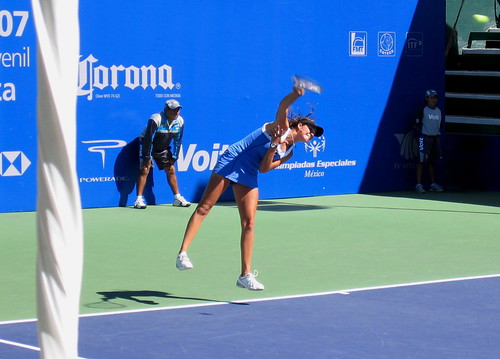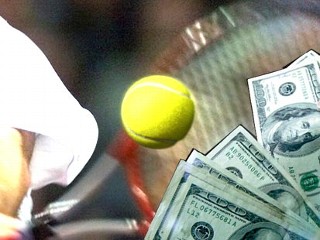
Tennis requires monstrous physical strength in this day and age. As a matter of fact, all sports require monstrous physical strength these days, because the level has jumped tremendously in the last decade. When we watch sporting events, there are often history flashbacks to past champions, or similar sport situations from the past that the editing crew comes up with during the airing, and first we may remark about the hairstyles or the clothes from back in the day watching this footage, but when that screen flashes back to present, we can’t help but think how far along this or that given sport has come along, mostly in a super human way. Then of course we think of the issues in sports that propel them to that type of height, mainly doping. It is a spoken or maybe unspoken fact that some Federations force their athletes to take things, some athletes experiment on their own, so many have been caught and denied achievements in their sporting careers because of it. Is it worth it? They don’t make bad players better; they only make great players greater. Sports are no longer sports when people go out of their way, literally. The restrictions and check ups on doping today are pretty stringent too, which is good. In a way, its invasive yes, when officials can show up at your door any day asking you to take a test, and when they force you to disclose your location on a daily basis. At the same time, how else do we control for these types of substances to level the playing field to the natural and the truly talented and hard working, not all of the above and then some. A lot of athletes speak up against this. They compare it to the paparazzi, stalking their lives and questioning their abilities instead of appreciating them. And then the question of doping matters is so interesting in itself. Do the substances evolve like computers; are the doping officials as up to date as possible? Is there a chemistry team somewhere working on new developments and their override-systems like hackers do? Either way, if there is no other way to check up on athletes, then it must be done. After all this is their job and if employees can be subjected to tests by the corporate world, athletes can handle this too, especially since it is something that has the potential to change the face of sports.
Serena Williams claims the new anti-doping restrictions are “over the top” and she is not alone. Rafael Nadal is one of the most outspoken critics claiming it makes players feel like “criminals” and that it is “harassment”. Andy Murray is also against it. The only top player that is ok with it is Federer. He acknowledges that it is not the easiest system but nevertheless says, “I know it's a pain, but I would like it to be a clean sport, and that's why I'm OK with it." Maybe these protesters have something to worry about; they are “monstrously fit”. Maybe they really do feel insulted in a way, that they give it their best and still have to be subjected to this random testing. But hey, if it keeps the sport pure and keeps one of them from turning into the Hulk of tennis, it is worth it. Besides for a sport so concerned with apparel and appearance, that wouldn’t be a very pretty sight, we have enough muscle and grunting out there as it is.
Source: http://sports.espn.go.com/sports/tennis/news/story?id=3902886
















